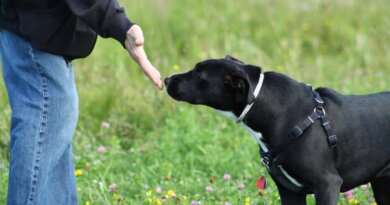10 Anti-Aging Hair Care Tips
Your hair, like your taste in music and comfort level with social media, can give away your age. Hair changes with age just like the rest of your body. “Hair follicles get smaller, sebum production declines, and some people lose pigment cells and go gray,” says Francesca Fusco, MD, assistant clinical professor of dermatology at Icahn School of Medicine at Mount Sinai in New York City.
As hormones change, the hair sheds more and grows back more slowly, causing it to thin, says David Kingsley, PhD, president of the World Trichology Society. In addition, hormones trigger a reduction in sebum production that can leave the hair feeling dryer. At the same time, pigment cells in the hair bulb wane over time, Fusco says, so hair turns gray.
But while your hair changes with age, you can update it. We asked the experts to share their best anti-aging hair care tips and tricks to keep your strands looking healthy and youthful to represent your individual style.
See Your Doctor
“Address any thinning early,” Fusco says. “We have treatments like minoxidil and Propecia that work to regrow hair,” she says. “But it’s best to rule out other causes like anemia, iron deficiency, autoimmune disorder, or the side effects of medication.”
Get the Right Cut
“As your hair thins, it’s not a bad idea to cut your hair a bit shorter, but it’s a myth that you have to cut your hair short once you reach a certain age,” says Nunzio Saviano, owner of Nunzio Saviano Salon in New York City. “You can have beautiful hair that’s below your shoulders as long as it’s cut in longer layers that move together and give the illusion of fullness.” He explains that having too many layers only emphasizes thinning texture, but longer layers hold shape and look full.
Delve Into Your Diet
“Protein and iron are the two most important things to have in your diet for healthy hair,” Fusco says. “If your diet is restricted, it can affect hair loss.” She advises asking your doctor about a blood test and a medical history to check for a deficiency in iron, vitamin D, or other minerals. Once that’s ruled out, Fusco likes the supplement Nutrafol because it contains zinc and other antioxidants that promote hair growth. “There is good research, and my patients have been happy with the results,” she says.
When in Doubt, Moisturize
Saviano tells his clients to avoid drying mousses and gels because they can cause hair to look dull and strip away shine. His trick: “I like to use mousse designed for curly hair because it tends to be moisturizing and less drying for the hair,” he says. Fusco recommends rich conditioning treatments to hydrate aging strands. She likes macadamia nut oil masks once a week.
Hair Texture And Density
It helps to know the texture and density of your hair before you treat it.
Texture is a measure of the diameter of your hair. The wider each follicle, the more “coarse” is its texture. Hair with a small diameter is said to have a “fine” texture. A medium texture lies somewhere between.
You can get a sense of texture by holding a single hair between your thumb and index finger. You’ll barely be able to feel hair with a fine texture, but a more coarse texture will feel like a piece of thread.
A “thick head of hair” does not refer to hair texture, but rather to its density. Density is expressed in terms of thick and thin. Hair is more dense, or “thick,” when its growth pattern is closer together and “thin” when the pattern is further apart. All things being equal, those with thick hair will have more hair on their head than those with thin hair.
How can you tell which you have? Look at your head in the mirror. If you have thick hair, you won’t be able to see your scalp. If you have thinner hair, your scalp will be more visible, especially where you part it.
But just because you have thin hair doesn’t necessarily mean you also have fine hair. Texture and density can be completely independent of each other.
Brush With Greatness
There’s an old wives’ tale that you should brush 100 strokes a day. That isn’t necessary, Saviano says. But gentle brushing can encourage healthy blood flow to the scalp, which is good for the hair. In fact, some research shows that scalp massage may help increase hair thickness. He suggests using a Mason Pearson soft boar bristle brush because the natural bristles are gentle on delicate strands and will distribute the hair’s natural conditioning oils.
Check the Label of Your Lather
“Look for a zinc pyrithione shampoo — it’s usually in dandruff formulas,” Fusco says. She says the ingredient is hydrating and soothing, whether you have dandruff or not, and can help anyone feeling tightness or itchiness due to decreased sebum production on the scalp.
Keep Your Cool
Heat styling can be especially damaging to thinning hair fibers. The stress can cause breakage, and since the hair is producing less sebum, you have less natural protection against the heat. Fusco warns against using too many heat tools and recommends keeping any time you expose hair to flat irons or blow dryers to a minimum.
Stay Away From Spray
Jet Rhys, owner of Jet Rhys Salon in Solana Beach, CA, tells her clients not to use too much hair spray. The drying alcohols in these stylers can cause hair to become dry and brittle.
Build Body
“There is a wonderful product called Toppik that uses vegetable fibers to camouflage areas of thinning hair,” says Mona Gohara, MD, an associate clinical professor of dermatology at Yale University. She says it’s very helpful in creating the appearance of hair thickness.
Gloss Over Gray
Gray hair naturally has a wiry, dull texture that reflects less light, Rhys says.
“Semi-permanent or permanent color can improve the texture and add body, but you don’t have to completely cover your gray,” she says. “You can just add a few ribbons to add some shine.” She also says that color has the perk of increasing volume, so it helps thinning hair feel fuller as well. “A few highlights around the temple can make a big difference in creating the look of volume and shine,” Saviano says.
Find more articles, browse back issues, and read the current issue of WebMD Magazine.




